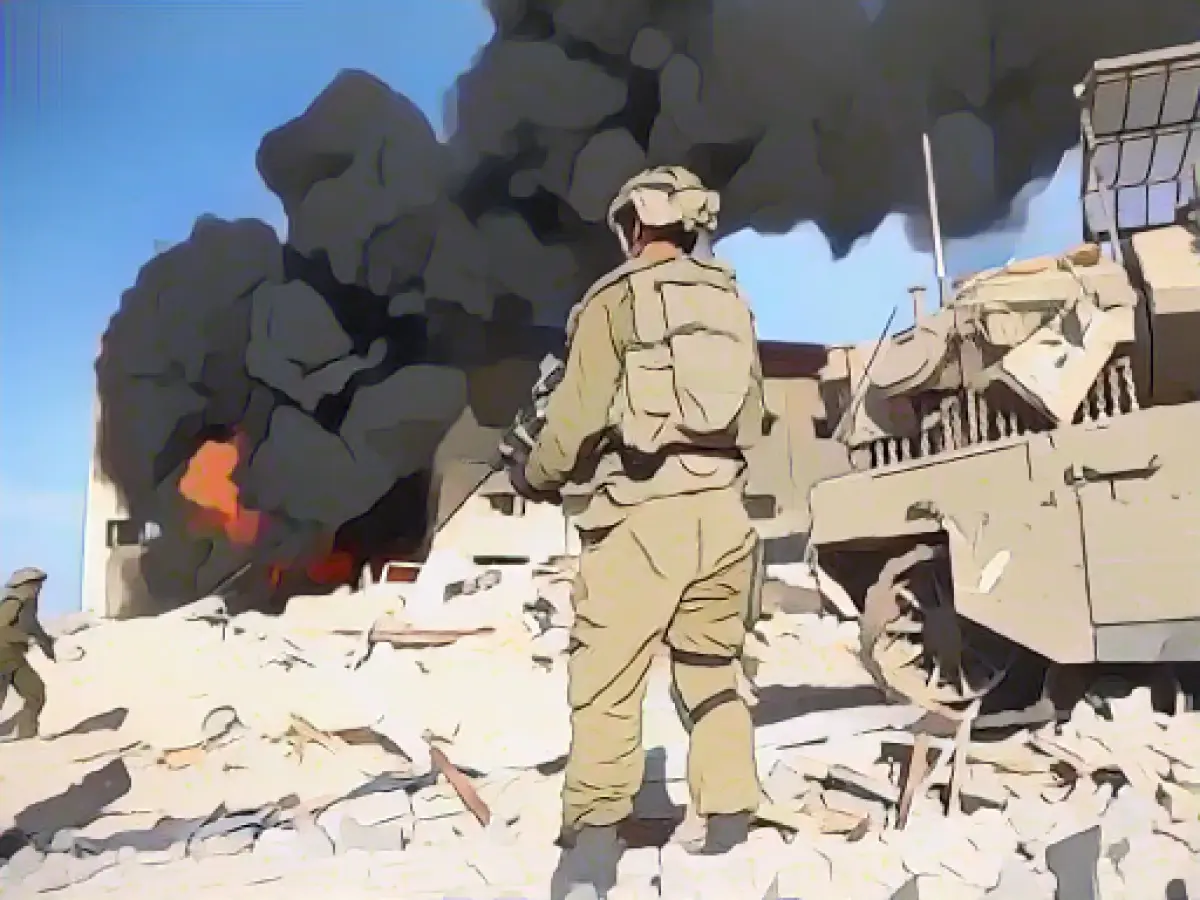Israel in Hamas territory: "Focus on the underground"
From Israel's point of view, everything is going according to plan in the war against the Islamist Hamas in the Gaza Strip. "We are on the verge of destroying the military system in the northern Gaza Strip. There is still some work to be done, but we are well on the way," says Chief of Staff Herzi Halevi during a troop visit to the approximately 40-kilometer-long coastal strip - and announces that "more and more regions will be targeted". Experts expect that fighting could soon also take place on the ground in the south.
In the northern city of Gaza, where hundreds of thousands of people lived before the war, Hamas already appears weakened. Israeli soldiers demonstratively hoisted Israeli flags on the beach and photographed themselves in the parliament building.
The military reported useful information for the intelligence services, thousands of terrorists killed and Hamas strongholds captured - including hospitals with "hidden command centers" of the terrorists. But these successes could be just the beginning of a long campaign by Israeli ground troops.
Expert: tunnel system crucial
The terrorist organization Hamas has largely lost control above ground in the north of the Gaza Strip, "but there is still a long way to go to eliminate its entire military capacity", says Harel Chorev, Middle East expert at Tel Aviv University. A decisive factor is Hamas' extensive tunnel system.
Thousands of fighters could be entrenched in the branched network of tunnels. It is estimated to be around 500 kilometers long. It is likely that numerous terrorists have fled from the north to the south, says Chorev.
Hiding under the ground
More than 300 tunnel shafts and various "underground locations" are said to have already been destroyed by the military. "We are paying particular attention to what is underground," said military spokesman Daniel Hagari.
There are many methods of destroying the tunnel structure besides air strikes, said Orbach. "You can flood the tunnels with sea water or waste water, for example." The military also has special robots that are sent into the shafts, some of which are up to 80 meters deep. Dogs are also used.
The biggest problem, however, is the hostage issue. At least some of the 240 people kidnapped by Hamas terrorists on October 7 are believed by the army to be in the tunnels.
It is unclear how many Hamas members are hiding underground. Military historian Danny Orbach from the Hebrew University in Jerusalem estimates: several thousand. According to the Israeli military, there were around 30,000 Hamas fighters before the war began on October 7. According to Israeli estimates, more than 4,000 have been killed since then. Palestinian sources have not yet provided any information on this.
"Hamas territory"
Orbach does not anticipate imminent fighting in the tunnels. "The Israeli military will only consider this in individual cases where there is no other option," says Orbach. There is a special unit specially trained for such cases. "But tunnel fighting carries a very high risk." There is no GPS in the tunnels, there is little light, shots could ricochet off the walls and hit the soldiers themselves.
In addition, the tunnels are Hamas territory. "They have probably been preparing for this scenario for years," says Orbach. According to him, the Israeli soldiers have already been confronted above ground with explosive traps on doors, windows and at tunnel entrances. "This could become even more extreme in the tunnels." Last week, four soldiers from a special unit were killed by an explosive device at a tunnel shaft.
At the same time, the military knew that Hamas could not "stay underground indefinitely". Food and fuel would run out at some point. "Tunnels can no longer be lit or ventilated."
Whether and how many supplies could be smuggled into Gaza from Egypt via the tunnels, for example, is difficult to say. "Smuggling at this time is very risky, but probably only possible in small quantities," Orbach suspects. "If they haven't already fled to Egypt via the tunnels."
Shifting the fighting to South Gaza?
Orbach and other observers also believe that the fighting is likely to shift to the south of the Gaza Strip. The aim of the Israeli military is to weaken Hamas to such an extent that it collapses from within, says Orbach.
Not every single member has to be killed to achieve this. But it must be prevented that the terrorist organization can regain strength elsewhere - for example in Chan Junis, a city in the south of the coastal strip.
This week, the Israeli military has already dropped leaflets in Arabic over Chan Junis. People were told to move to "the known safe zone". According to local media, panic broke out among the inhabitants of the affected neighborhoods.
According to the UN, almost 1.6 million of the approximately 2.2 million inhabitants of the 40-kilometre-long coastal area have fled as a result of the fighting. Most of them moved from the north towards the south. But there are regular air strikes there too. A possible ground offensive there could exacerbate the already devastating humanitarian emergency.
Orbach has no doubt that a ground operation is also imminent in the south. "Israel doesn't want Hamas to get too comfortable in the south," he says. In general, he does not expect the war to end any time soon. "The intensity will change, but the fighting could continue for months." It remains to be seen where they will shift to.
- The extensive tunnel system in Gaza, used by Hamas to evade ground battles and store weapons, could potentially become a new battleground in the conflict.
- Despite Israel's successful attacks on Hamas strongholds, including hospitals concealing terrorist command centers, the military continues to focus on neutralizing the organization's underground presence.
- Hamas' military capacity in the south of the Gaza Strip, particularly in cities like Chan Junis, is becoming a major concern for Israeli forces as they shift their focus from the north.
Source: www.dpa.com








